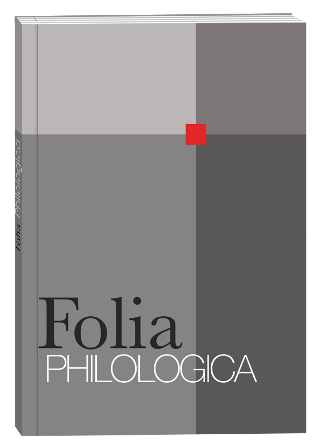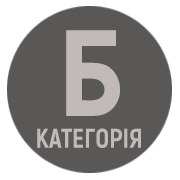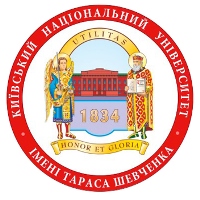THE CATEGORY OF THE STATE OF THE OLD GERMANIC LANGUAGES IN THE CONTEXT OF THE ELIMINATION OF REDUNDANCY LINGUISTIC PHENOMENA
DOI:
https://doi.org/10.17721/folia.philologica/2024/8/12Keywords:
category of the statе, state proto-categorical construction, mediopassive, Old Germanic languages, elimination of linguistic phenomenaAbstract
The article presents various trends of research into the category of state of Old Germanic languages in the context of dynamic synchrony to eliminate linguistic phenomena of redundancy. Scientific exploration involves identifying and comparing factors that determine morphosyntactic changes in the category of state within the language areas: Goth- Scandinavian (Gothic and Old Icelandic) and West Germanic (Gothic, Old English, Old High German and Old Saxon). The study aims to search for new universals, diachronic constants associated with formation of the category of state in Old Germanic languages within the framework of inter-areal opposition. The problem of interpreting the category of state of Old Germanic languages lies in its oppositionality, multi-aspectivity, polysemanticity, and semantic incompleteness. In particular, the study provides an external description of the paradigm of the category of state, restoration of the previous stage of development of its grammatical subsystem; establishing the paths of its genesis in dynamic synchrony. The process of emergence of the original relict class constructions of the Old Germanic languages occurred unevenly: the active state was opposed by sporadic constructions with the semes of class, reversibility, inertia (inactivity), etc. The results of typological studies of the specifics of origin and development of the class category, its class constructions significantly expanded the idea of functioning of the class category paradigm based on the Old Germanic languages, made it possible to determine the asymmetry of class oppositions within the paradigm by areal features. The key findings in the study of the class category paradigm were ancient constructions that formed an asymmetric opposition to the active state, the quantitative indicators of such constructions and the varying degree of ability for their further grammaticalization are due to various intra- and extralingual factors. An integrated approach to the facts made it possible to explain certain deviations from the original directions of development of the category of state and thereby contributed to revealed interaction of internal and external factors of language development. The proposed methodology, results and conclusions of the scientific article can be used in further theoretical developments in the field of not only historical morphology, but also of general theory of language evolution and mechanisms of development of language systems.
References
Buniiatova, I. R. (2009). Typolohiia movnykh zmin v istorychnii perspektyvi [Typology of language changes in historical perspective]. Visnyk Kyivskoho natsionalnoho linhvistychnoho universytetu. Seriia Filolohiia, 12(1), 57–65 [in Ukrainian].
Buniiatova, I.R. (2011). Evoliutsiia dynamichnykh system (na materiali deiakykh indoievropeiskykh mov) [Evolution of dynamic systems (based on the material of some Indo-European languages)]. Visnyk Kharkivskoho natsionalnoho universytetu imeni V. N. Karazina. Seriia: Romano-hermanska filolohiia. Metodyka vykladannia inozemnykh mov. Kharkiv, 66(954), 159–165 [in Ukrainian].
Buniiatova, I. R. (2011). Shliakhy rozvytku movnykh system: evoliutsiia i katastrofa [Paths of development of language systems: evolution and catastrophe]. Mahisterium: Movoznavchi studii. Kyiv, 43, 3–8 [in Ukrainian].
Horodilova, T. (2022). Yavyshche polinehatsii v istorii nimetskoi ta anhliiskoi movy: vypadok nadlyshkovosti [The phenomenon of polynegation in the history of German and English: a case of redundancy]. Aktualni pytannia inozemnoi filolohii, 16, 10–17 [in Ukrainian].
Allen, C. L. (1999). Case Marking and Reanalysis: Grammatical Relations from Old to Early Modern English. Oxford University Press.
Allen, C. L. (1980). Topics in Diachronic English Syntax. Garland Publishing.
Barðdal, J. (2008). Productivity: Evidence from case and argument structure in Icelandic. John Benjamins.
Bouzouita, M., Breitbarth, A., Danckaert, L., & Witzenhausen, E. (Eds.). (2019). Cycles in Language Change. Oxford University Press.
Chomsky, N. (2000). Minimalist Inquieries: the Framework. Step by Step. In Roger Martin, David Michaels & Juan Uriagereka (Eds.), Step by Step: Essays on Minimalist Syntax in Honor of Howard Lasnik (рр. 89–155). MIT Press.
Crowley, T. (2007). An introduction to historical linguistics (4th ed.). Oxford University Press.
Das Nibelungenlied. Text und Einführung. (2017). 2. Auflage. Hermann Reichart (Hrsg.). De Gruyter.
Denison, D., & Hogg, R. (2019). Stable variation in multidimensional competition. In A. Breitbarth, M. Bouzouita, M. Farasyn, & L. Danckaert (Eds.). The Determinants of Diachronic Stability. Amsterdam: John Benjamins, 39–61.
Emonds, J. E. (1985). A unified theory of syntactic categories. Springer.
Gelderen van, E. (2004) Grammaticalization as economy (Linguistik Aktuell/Linguistics Today 71). Amsterdam & Philadelphia: John Benjamins.
Hudson, R. A. (1984). Invitation to linguistics. Basil Blackwell
Lightfoot, D. W. (1991). How to set parameters: Arguments from language change. MIT Press.
Ludwigslied. Retrieved from: http://www.hs-augsburg.de/~harsch/germanica/Chronologie/09Jh/Ludwigslied/lud_text.html
Meillet, A. (1903). Introduction à l’étude comparative des langues indo-européennes. Hachette.
Paul, H. (1898). Prinzipien der Sprachgeschichte. Dritte Auflage. Halle: Max Niemeyer.
Poetic Edda. Old Norse-English diglot. (2011). Old Norse: Karl Hildebrand and Hugo Gering, English: Henry Adams Bellows. Melbourne.
The Wulfila Bible (The Gothic Bible). Retrieved from: https://wulfila.verbix.com/#google_vignette









